
Skoda Superb Hatchback engines, drive and performance
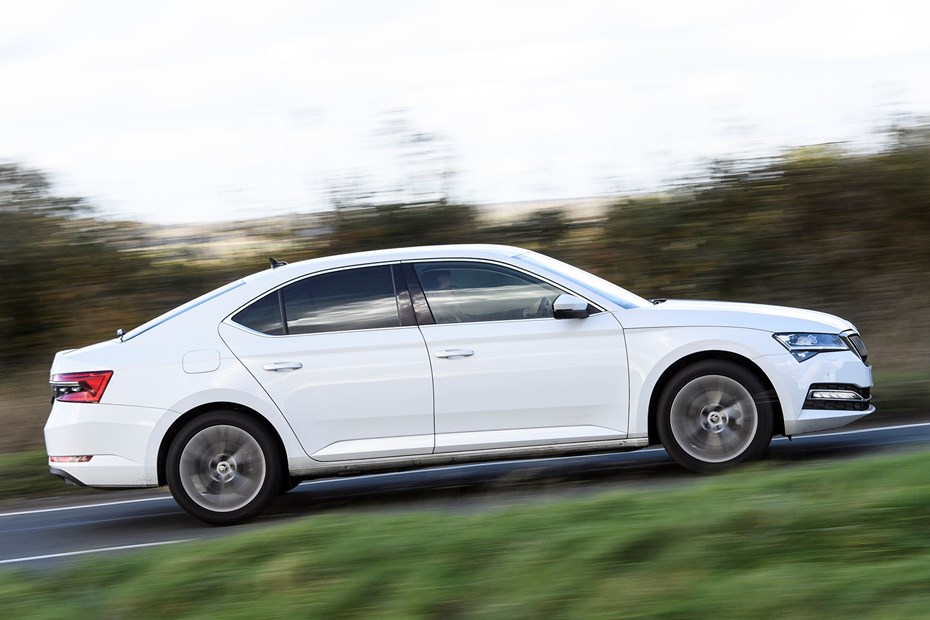
- Several engines available in the Superb
- Choice of manual or DSG gearboxes
- Plug-in offers pace and economy
Petrol engines
Kicking off the Superb range is a 1.5-litre TSI petrol engine producing 150hp and 250Nm of torque. With a 0-62mph time of 9.1 seconds, though, it hardly feels entry-level. We’ve been impressed with this engine in several other VW Group products, including the similarly-sized VW Arteon.
In the Superb, it’s civilised and quiet at a cruise, which further boosts the car’s impressive refinement. This engine shuts down two of the cylinders when all four aren’t being used, in a bid to boost economy and efficiency, and is also available with a choice of six-speed manual or DSG automatic gearboxes.
There are two outputs for the 2.0 TSI petrol. The 190hp version has 320Nm of torque and can accelerate from 0-62mph in 7.7 seconds, but the real powerhouse is the 280hp version. This has 350Nm of torque, all-wheel drive and a DSG gearbox, which means it’s capable of 0-62mph in just 5.3 seconds.
Diesel engines
At the sensible end of the spectrum is a 2.0 TDI with 150hp, which is a big seller in the range on account of its accessible performance and impressive economy. Fitted with either a manual or DSG auto gearbox the 0-62mph time is 9.1 seconds, and on the road it feels eager, with 360Nm of torque available from just 1,750rpm.
The range-topping diesel is also a 2.0-litre TDI, this time with 200hp and 400Nm of torque. Correspondingly, the 0-62mph time is a quick 7.9 seconds (7.3 seconds with four-wheel drive) and top speed is in excess of 140mph. It’s linear in its performance on the road, though a slight diesel grumble is evident when it’s extended. For us, the 150hp model feels like a slightly sweeter state of tune with extra refinement over this unit, plus the 200hp unit is only available with a DSG auto.
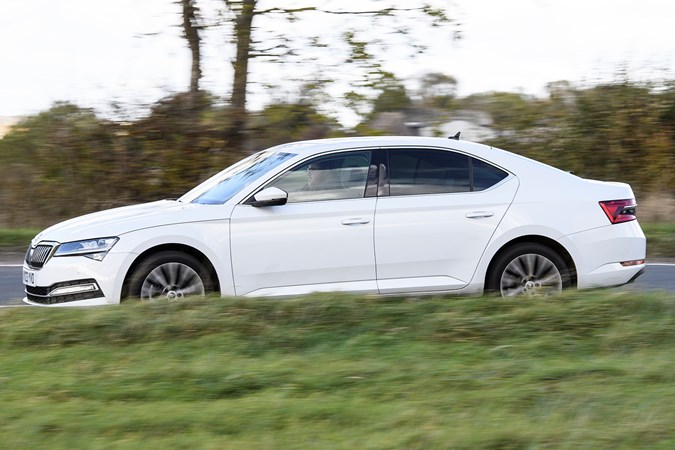
Plug-in hybrid engines
The Superb iV is the plug-in hybrid variant. This pairs a 1.4-litre petrol engine to an electric motor and battery pack, giving a total of 218hp. It’s the same hybrid system you’ll find underpinning many other VW Group plug-in hybrids, including the VW Passat GTE.
It certainly makes the Superb feel rapid. A 0-62mph time of 7.7 seconds is possible thanks to the instant response and low-down punch of the electric motor. In reality, once you’ve tested the waters a few times, it’s far more relaxing to simply sit back and let the car waft you along. The system is smooth, with the engine and electric motor shuffling power around more seamlessly than in the Peugeot 508 HYbrid. In fact, if you aren’t watching the rev counter you’d be hard-pressed to notice when the engine does cut in, with the six-speed DSG keeping the revs low unless called upon for acceleration.
The driver can select from a few modes. Electric, naturally, runs the car as a pure EV, while Hybrid Auto juggles between the two power sources as it sees fit. Hybrid Manual allows the driver to set a level of charge that they’d like the battery to remain at – say, for example, you’re commuting into London and want to reserve some charge for the ULEZ. Depending on this level, the Superb iV will either hold the battery or charge it up from the petrol engine if needed, although this will harm fuel economy.
What’s it like to drive?
- Superb errs more on the side of comfort
- Handling is tidy, but there’s some roll
- Driving modes are available
First and foremost, the Superb is designed to be a comfortable, luxurious and relaxing executive car, so those hoping for a sharp, sporting saloon should look elsewhere. That said, it’s built on the same platform as the VW Golf, Audi A3 and many other VW Group models, and the car is reasonably nimble for its size.
Choose SE L and above and you’ll benefit from the Drive Mode Selection, which alters the steering, throttle, air conditioning and even lighting responses depending on chosen option – ranging from Normal, Sport, Eco and Individual. Those cars fitted with Dynamic Chassis Control (DCC), which adjusts the dampers, also benefit from a Comfort mode.
And it certainly helps the car cosset its occupants, but we’d be tempted to leave everything in Normal, as the comfort dampers setting struggles to maintain suspension control on an undulating road. Normal steering is infinitely preferable too since Comfort is too light and Sport simply adds weight rather than any additional feel.
Driven out of its comfort zone, the Superb makes a decent effort, with sharp responses to steering inputs and, thanks to its XDS+ electronic front differential, a decent amount of traction from the front tyres. It fails to entertain though, and you’ll soon have to remind yourself that this is a comfortable saloon, not a sporty one.
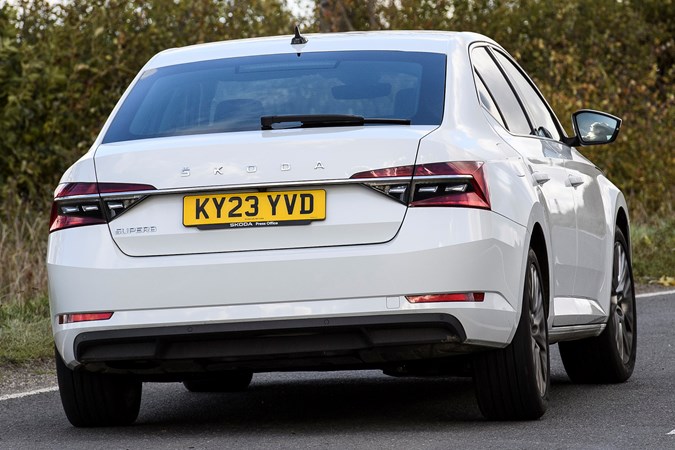


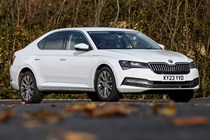
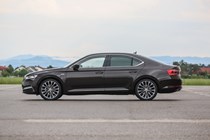
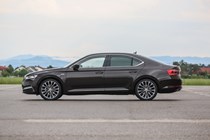
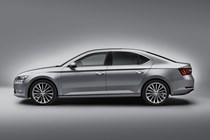
.jpg)
.jpg)
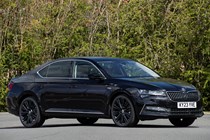
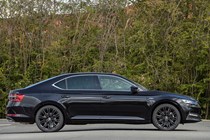
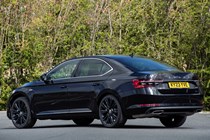
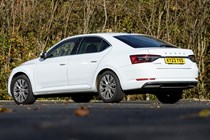
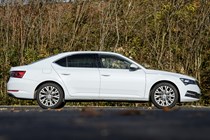

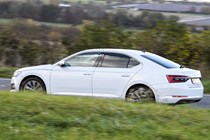

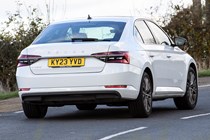
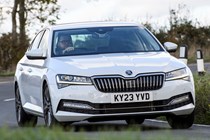

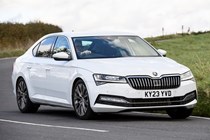
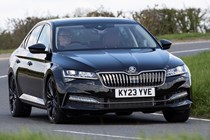
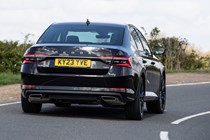
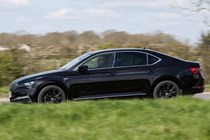
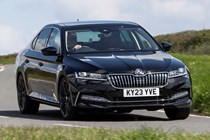
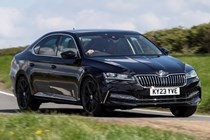
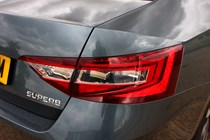
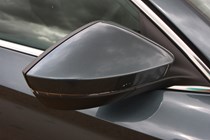
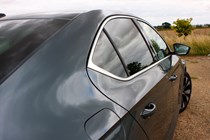
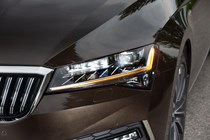
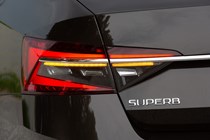
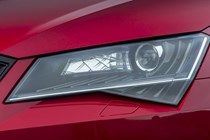
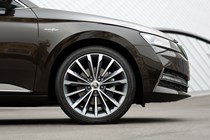
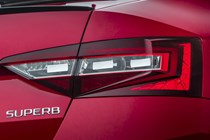
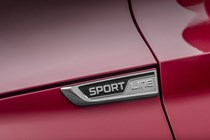

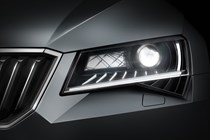
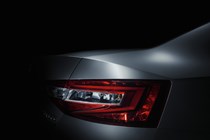
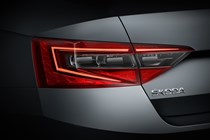
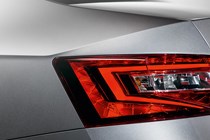
.jpg)
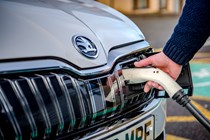
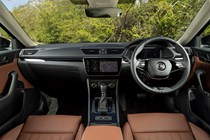
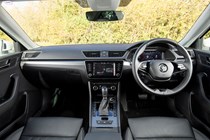
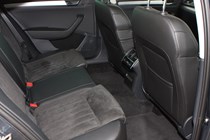
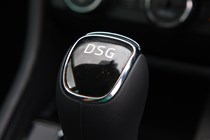
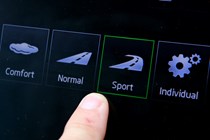
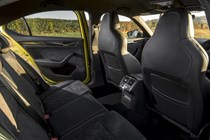


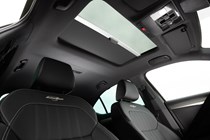
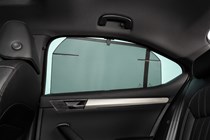
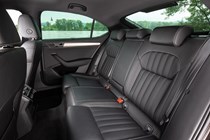
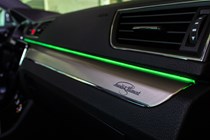
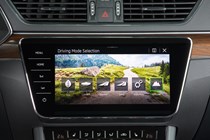
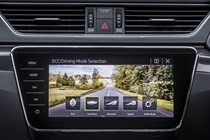
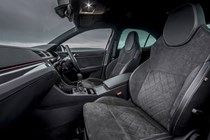
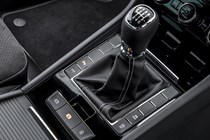
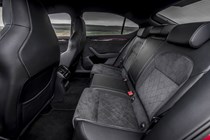
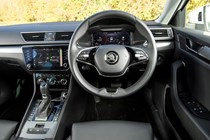
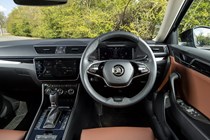
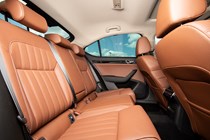
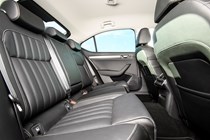
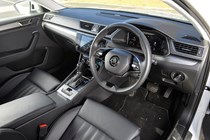
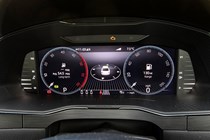
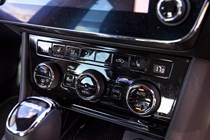
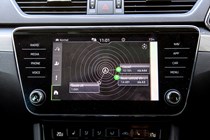

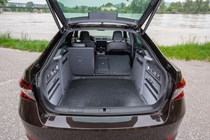
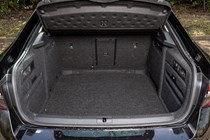
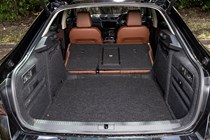
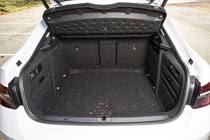
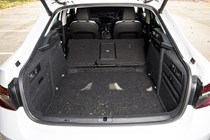




.jpg?quality=50)
.jpg?quality=50)































.jpg?quality=50)































